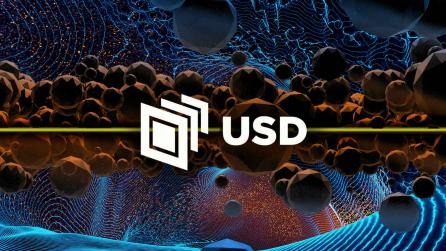An inside look at how USD is set to power-up Foundry software
The swelling adoption of open source standards and the formation of the ASWF is set to have far-reaching implications for the VFX industry in the years to come.
With agreed guidelines in place to govern key aspects of VFX workflows (like color management, geometry and image file formats), it’s expected a new era of pipeline efficiency and collaboration will begin as Universal Scene Description (USD) matures, as we explored in our previous article.
In this article, we’ll take a look at how Foundry is incorporating USD into our creative tools - and give a peek into our plans for the future.
Powerful USD Hydra technology
Participating in industry open source software projects is part of Foundry’s mandate. Specifically, opening up the pipeline for studios and enabling them to connect all their preferred tools is a central pillar of the Foundry approach.
As Adam Cherbetji, Lead Engineer at Foundry explains: “We’ve always been very open about the way we interact with other software. The drive for interoperability is part of our DNA.
While we have software that fits many parts of the pipeline, we’ve always favored open standards and made sure our software works with other vendor’s tools. We want our software to be customizable and open, so studios can choose what fits best for them.”
Rob Fanner, Foundry Engineering Manager, echoes this: “If we don’t provide support for a different format, we provide APIs so you can plug into Nuke or plug into Mari, for example. We never lock the door for you, so you can support whatever file format you like. And if there’s an open standard, we try to adopt it.”
This adoption has seen some exciting developments in Foundry tools over the past year: “Katana’s viewport is now powered by Hydra and this has seen a massive improvement over the previous viewer,” he explains.
Hydra is a powerful USD technology developed by Pixar. Designed to work with modern graphics cards, it can handle massive scale and allows Physically Based Rendering (PBR) lighting and shading.

For artists, this means they can work faster and more accurately, as well as interact easily with vastly more geometry.
“There are two key parts,” Adam says. “USD is a framework for describing the scene in a universal way, and Hydra facilitates visualization of the scene in a universal way, so you see it consistently.
Right now, each software package like Maya, Modo and Katana, has their own way of taking that geometry and creating a picture in a viewport, but really what you want is a consistent window on that virtual world across all software.
Hydra could allow you to plug in your own viewport renderer, whatever it may be, and theoretically plug it into many applications. We’re very excited about that.
At the moment it’s not for final pictures: it’s for reviewing the work in progress, for giving a real-time, interactive view, as opposed to the final quality pixel. But that development is further down the line.”
A better-connected VFX ecosystem
The tantalizing possibilities afforded by these developments particularly excites Group Product Manager Jordan Thistlewood, who looks after Katana, Mari, and Flix at Foundry: “We’ve seen a lot of value in the USD Hydra technology. We’ve really been able to push it with the new Katana viewport that we introduced in Katana 3.0.”

“We’re excited by the render delegate system, which will allow us to build a viewport as a modular kit,” he goes on.
“If clients want to use the plain, vanilla GL that’s in there, then they can do that. If they want to build a customized viewport with more advanced options across their pipeline then we will make it easy for them to fit that into Katana.
We’ve already experimented with the Modo Advanced Viewport technology and binding that as a render delegate, which looks very promising. While Katana previously allowed registration of custom Viewport rendering via it's Viewport API, clients will soon be able to experiment with Arnold, Renderman and 3Delight render delegates in Katana's Viewport. This will further improve inter-application consistency and reduce overall development costs, in addition to improving artist workflows. Having one viewport technology that spans multiple products for our clients is really cool.”
For studios, the long-term benefits of these developments could be huge: “We’re looking forward to enabling our clients to create a better-connected ecosystem of tools, so they can move through Houdini, 3ds Max, Maya, working with Katana as their lighting tool of choice, and making sure that Katana contributes to a round trip.
Katana’s upcoming ability to do this will ultimately make for a much more holistic USD world.”
Looking towards a USD future
USD has seen an almost unprecedented pace of adoption, with many developers experimenting to explore the practical applications of the technology - Foundry included: “We’re currently using USD to power some of our forward-looking research projects,” Rob says.
“We’re also starting to integrate - or looking towards integrating - our internal viewers as Hydra render delegates.
There are several teams now experimenting with USD in different contexts, some of whom are working on next-generation research ideas, with things progressing on several fronts. So it’s a big part of our technology-drive right now.”
All this means it’s an exciting time for artists and studios using Foundry tools, with the road ahead likely to include USD-based developments that allow big leaps forward in pipeline efficiencies.
If you’d like to experience first-hand the power of Katana technology
Get a free 30-day trial of Katana
and explore the Hydra-powered viewport discussed in this article.


